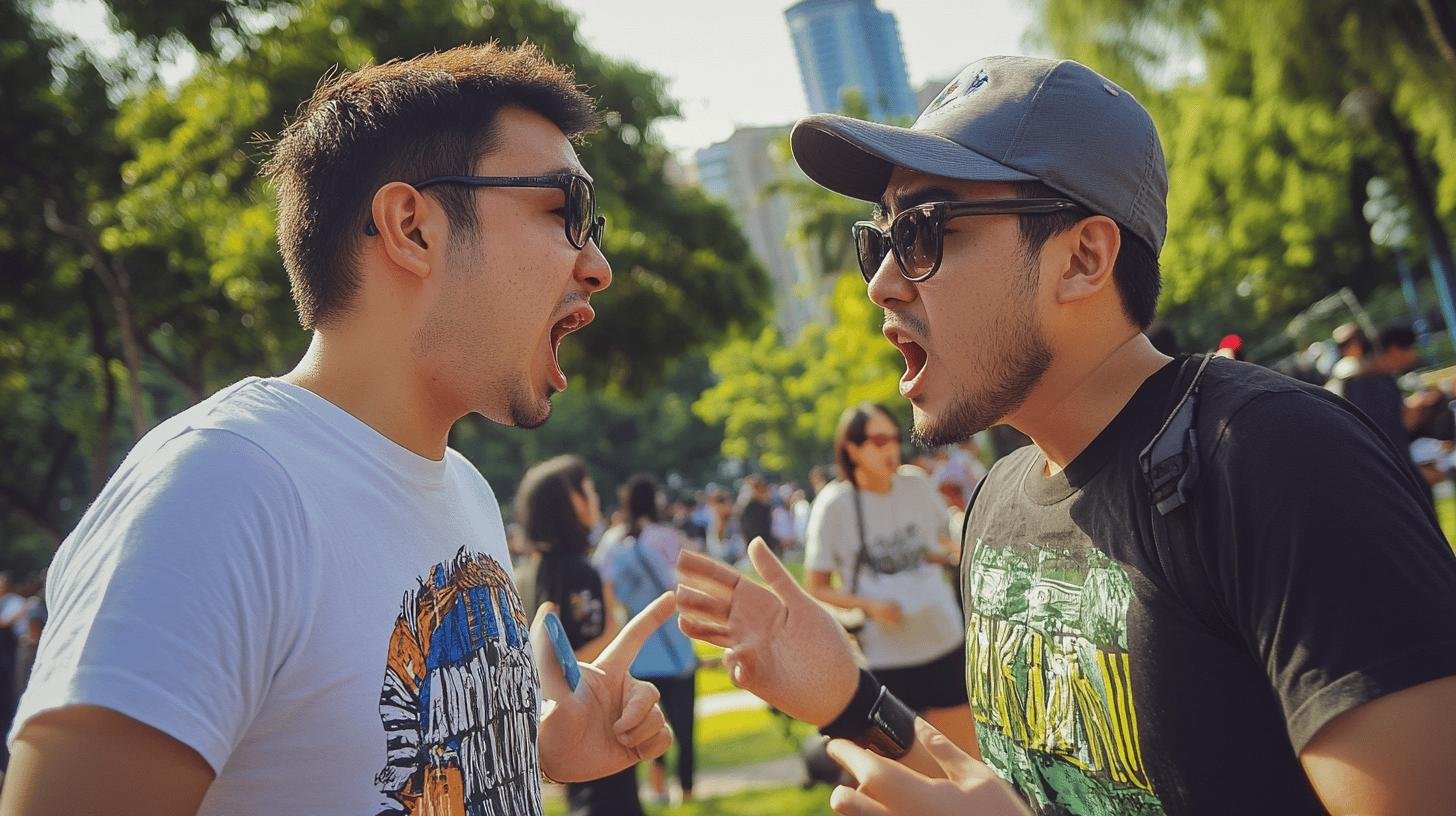TL;DR:
- Woke Origins: “Woke” began as awareness of racial injustices in African American communities, evolving to include broader social justice issues.
- Key Milestones:
- 1938: “Stay woke” coined by Lead Belly.
- 2013: Black Lives Matter launched.
- 2017: #MeToo movement.
- Opposition: Anti-woke advocates criticize wokeness for stifling free speech and traditional values.
- Influential Figures:
- Woke: Al Sharpton, Tarana Burke, Black Lives Matter.
- Anti-woke: Ron DeSantis, Ben Shapiro.
- Media Roles: Mainstream media often supports woke causes, while conservative outlets criticize them.
- Societal Changes: Increased inclusive policies and generational divides; backlash includes anti-woke legislation.
- Corporate Trends: Woke capitalism vs. anti-woke corporate strategies drive consumer behavior changes.
Is the term “woke” a positive force for change or just another divisive buzzword? The Woke vs. Anti-Woke Debate is more than just a heated argument—it’s a deep cultural clash that shapes our society today.
While some view being “woke” as a commitment to social justice and inclusivity, others see it as an attack on traditional values and free speech.
Let’s dive into both sides to explore the roots of this conflict and its implications for society.
The Origins of the Woke vs. Anti-Woke Debate
The term “woke” originally referred to an awareness of social injustices. It started within African American communities as a way to describe being alert to racial inequities. Over time, “woke” grew to cover broader social justice issues like gender equality, LGBTQ+ rights, and systemic racism. Today, wokeism represents an active stance against various forms of oppression and inequality.
Key historical milestones in the evolution of the woke movement:
- 1938: “Stay woke” first used in a song by Lead Belly.
- 1960s: The Civil Rights Movement highlights racial injustices.
- 2013: Black Lives Matter movement born after Trayvon Martin’s death.
- 2017: #MeToo movement raises awareness of sexual harassment and assault.
- 2020: Global protests after George Floyd’s death amplify calls for systemic change.
The anti-woke response emerged as a counter to perceived extremes of wokeness. Critics argue that wokeness undermines traditional values and cultural norms by imposing political correctness. They view identity politics as divisive and believe it stifles free speech. The opposition to wokeism is rooted in a desire to preserve established social structures and resist excessive social engineering.
Key Arguments in the Woke vs. Anti-Woke Debate

Proponents of wokeness focus on social justice, inclusivity, and systemic change. They argue for actively fighting systemic racism, promoting gender equality, and defending LGBTQ+ rights. Supporters believe addressing historical and ongoing injustices is vital for creating a fairer society.
Anti-woke advocates counter that wokeness stifles freedom of speech and promotes cancel culture. They argue political correctness has overreached, undermining traditional values and open discourse. To them, identity politics is divisive and detracts from more pressing societal issues.
| Argument | Woke Perspective | Anti-Woke Perspective |
|---|---|---|
| Social Justice | Essential for equality and fairness | Overemphasized, ignores other issues |
| Political Correctness | Necessary to avoid harm and marginalization | Restricts free speech and honest debate |
| Freedom of Speech | Should be balanced with respect and dignity | Fundamental right that should be unrestricted |
| Cancel Culture | Holds people accountable for harmful actions | Unfairly punishes and silences dissent |
| Traditional Values | Often perpetuate inequality and need reevaluation | Should be preserved to maintain societal stability |
These opposing views create a complex cultural clash with significant implications for society. Woke supporters push for systemic change to address inequalities, which they see as progress. In contrast, anti-woke advocates worry these changes erode essential freedoms and disrupt social cohesion. This ongoing debate shapes public policies, media narratives, and daily interactions, making it a pivotal issue.
Influential Figures and Movements in the Woke vs. Anti-Woke Debate
Influential figures in the woke movement include activists like Al Sharpton and movements such as Black Lives Matter. Al Sharpton has long been a prominent voice for racial justice and civil rights. The Black Lives Matter movement, born in 2013, has highlighted systemic racism and police brutality. Other notable figures include Tarana Burke, founder of the #MeToo movement, which has brought global attention to issues of sexual harassment and assault. These individuals and movements use social media and public platforms to spread their messages, garner support, and drive societal change.
On the anti-woke side, figures like Ron DeSantis and media personalities such as Ben Shapiro play significant roles. Ron DeSantis, Governor of Florida, has been vocal in opposing what he sees as woke ideology’s excesses, advocating against woke influences in education and public life. Ben Shapiro, a conservative commentator, is known for critiquing political correctness and cancel culture. Movements like the Intellectual Dark Web, which includes Jordan Peterson, argue against wokeism, advocating for free speech and traditional values. These anti-woke figures and movements also use social media and public platforms to influence public opinion and counter woke narratives.
Key Figures in the Woke Movement:
- Al Sharpton: Advocate for racial justice and civil rights.
- Tarana Burke: Founder of the #MeToo movement, focusing on sexual harassment.
- Patrisse Cullors: Co-founder of Black Lives Matter, a movement against systemic racism.
Key Anti-Woke Figures:
- Ron DeSantis: Florida Governor opposing woke influences in education and public policy.
- Ben Shapiro: Conservative commentator known for critiquing cancel culture and political correctness.
- Jordan Peterson: Psychologist advocating for free speech and traditional values.
The Role of Media in the Woke vs. Anti-Woke Debate

Mainstream media significantly shapes public perception of the woke vs. anti-woke debate. Outlets like CNN, The New York Times, and MSNBC often present woke issues as progressive and necessary for social justice. They highlight stories emphasizing systemic inequalities and the need for societal change. This portrayal aims to raise awareness and support for woke initiatives, framing them as positive developments for an inclusive society.
Conversely, conservative media often criticizes wokeness. Outlets such as Fox News, The Wall Street Journal, and Breitbart argue woke ideology undermines traditional values and imposes restrictive political correctness. They focus on perceived negative impacts of wokeness, like cancel culture and free speech erosion. This perspective seeks to rally opposition to woke policies and maintain established cultural norms.
Media outlets and their stances:
- CNN: Supports woke issues, highlighting social justice and equality.
- Fox News: Criticizes wokeness, focusing on its negative impacts.
- The New York Times: Advocates for woke initiatives and systemic change.
- The Wall Street Journal: Opposes woke ideology, emphasizing traditional values.
- Breitbart: Strongly anti-woke, promoting free speech and opposing cancel culture.
Social media significantly amplifies the debate, leading to polarized public opinion. Platforms like Twitter, Facebook, and Instagram serve as battlegrounds where both sides voice their arguments. Hashtags, viral posts, and influencer endorsements can quickly sway public sentiment. On these platforms, echo chambers often form, reinforcing existing beliefs and increasing the divide. As a result, social media not only reflects but also intensifies the cultural clash between woke and anti-woke perspectives.
Societal Impact of the Woke vs. Anti-Woke Debate
The woke vs. anti-woke debate has led to significant cultural shifts. Many institutions, including schools and workplaces, have adopted more inclusive policies and practices. This change affects how people interact and view social justice issues. For example, diversity training and inclusive language have become more common, reflecting a broader acceptance of woke ideals.
Generational differences play a crucial role in the debate. Younger generations, particularly Millennials and Gen Z, tend to support woke ideals, advocating for systemic changes to address social injustices. In contrast, older generations often resist these changes, viewing them as threats to traditional values and social stability. This generational divide fuels ongoing cultural tensions and shapes public discourse.
Key societal changes resulting from the debate:
- Inclusive Policies: Increased adoption of diversity and inclusivity measures in institutions.
- Workplace Training: More emphasis on diversity training and awareness programs.
- Language Evolution: Shift towards using more inclusive and respectful language.
- Educational Reforms: Changes in school curricula to include diverse perspectives.
- Legislation: New laws aimed at promoting or curbing woke policies.
Public backlash against woke ideals has led to significant policy responses. Some states have introduced anti-woke legislation to limit the influence of woke policies in education and public life. This includes laws banning critical race theory in schools and restrictions on gender identity discussions. These policies reflect a broader resistance to woke ideology and aim to protect traditional cultural norms. The societal impact of this backlash is profound, as it not only shapes legal frameworks but also deepens cultural divides and intensifies the debate.
Economic and Corporate Responses to the Woke vs. Anti-Woke Debate

Woke capitalism and corporate responsibility are significant trends today. Companies are increasingly adopting woke policies such as diversity training, inclusivity initiatives, and support for social justice causes. These actions often align with modern social values and attract a younger, socially-conscious customer base. Major corporations like Nike and Starbucks have embraced woke capitalism by using their platforms to promote social justice messages. While these actions can enhance brand loyalty among certain demographics, they also risk alienating customers who view such moves as superficial or politically motivated.
Anti-woke responses have emerged as a counterbalance, with some corporations avoiding woke policies or actively opposing them. These companies argue focusing on traditional values and avoiding political statements better sustains their business. For example, Goya Foods faced both boycotts and a surge in consumer support after its CEO voiced support for conservative political figures. The economic impact of these stances includes changes in consumer behavior and shifts in corporate strategies. Companies rejecting woke policies may benefit from a loyal customer base that shares their values, while those embracing wokeness can attract a different, equally passionate audience.
Examples of corporate actions and their consequences:
- Nike: Embraced woke capitalism with Colin Kaepernick ad campaign; saw both a sales boost and boycott.
- Starbucks: Implemented diversity training after a racial incident; aimed to improve public image.
- Goya Foods: CEO’s conservative stance led to boycotts and “buy-cotts,” affecting sales.
- Chick-fil-A: Conservative values led to boycotts but maintained strong customer loyalty.
- Gillette: Anti-toxic masculinity ad sparked controversy and mixed consumer reactions.
Final Words
The Woke vs. Anti-Woke Debate represents a deep-rooted cultural divide with no easy answers. As society grapples with issues of equality, free speech, and cultural norms, this debate will continue to shape public discourse. By understanding both sides, individuals can make more informed choices and engage in thoughtful dialogue.
This cultural clash is far from over, and as each side fights for its vision of society, the conversation will evolve. So, stay informed, stay engaged, and be ready for the next chapter in this ongoing debate.
FAQ
What does the term “woke” mean?
It originally referred to being aware of social injustices, but now covers broader social justice issues like gender equality and systemic racism.
What are the main arguments for wokeness?
Proponents support fighting systemic racism, promoting gender equality, and defending LGBTQ+ rights.
What are the main arguments against wokeness?
Critics argue that wokeness stifles free speech, promotes cancel culture, and undermines traditional values.
Who are key figures in the woke movement?
Activists like Al Sharpton and Tarana Burke, and movements such as Black Lives Matter and #MeToo.
Who are key figures in the anti-woke movement?
Politicians like Ron DeSantis and commentators like Ben Shapiro, who critique cancel culture and advocate for free speech.

